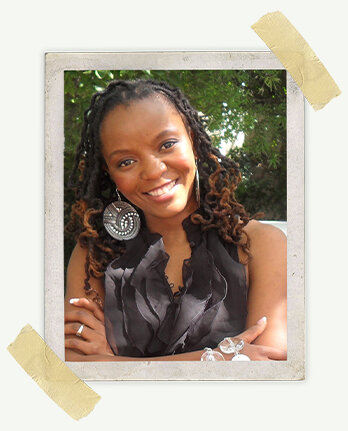I am Gqibelo Dandala, a descendant of rural people who studied their way out of poverty.
I come from eDutyini, a rural village near the blink town of Mount Ayliff in the Alfred Nzo district municipality in the Eastern Cape province of South Africa. Despite being the home of two former presidents this province remains ravaged by poverty manifested in illiteracy, economic impoverishment, high unemployment and high birth rates.
With this being where I come from I believed, no I knew, that I understood poverty and its permutations within rural communities. In South Africa the term ‘rural’, or as others would say the ‘countryside’, is not a geographic descriptor. Nor is it necessarily a descriptor for natural, untouched beauty as one would think for example when thinking of the countryside of England, the South of France or quaint Nordic villages. Instead the words rural – poverty – economically depressed - living below the poverty line – are used interchangeably. I, whose roots run deep within those very rural areas, thought I was ‘au fait’ with all things rural and beyond the ‘shock’ that others experience on their first encounter with this poverty. That is until visiting TSHANI village in OR Tambo municipality.
It was absolute kismet to be recruited to be a part of One to One Africa, an organisation truly committed to improving the maternal and child health outcomes of rural communities. What I didn’t anticipate was the extent of this commitment! One to One Africa literally serves last mile rural communities.
On my first visit to TSHANI village as the newly appointed executive director at One to One Africa, I became the proverbial outsider, utterly shocked by how rural (read impoverished) it was! In my South Africa? In 2021? People lived in such dire poverty?!? No quality, sophistication or comfort of an SUV could make the trip to TSHANI exciting or enjoyable, the endless narrow and winding paths (they can’t be classified as roads) left my head spinning, both literally and figuratively despite the world-class traction-control fitted into the SUV.
South Africa prides itself on the extensive internet coverage throughout the overwhelming majority of country, even in the most rural of areas such as my home village. TSHANI village is a last mile community which managed to fall outside of this coverage. The incredible processing power of our android and iOs devices were futile because there was no internet to be had! This introduction to TSHANI village was an accurate pre-cursor to the deep-rooted and widespread poverty within this community. So far removed is TSHANI from (relatively) more developed areas that COVID-19 barely impacted this community, our beneficiaries and our staff within the community.
My shock faded with meeting our team on the ground, a formidable group of local women – ordinary women who walk kilometres and kilometres each day, going from one household to another, providing health education, an ear, a hand and peer support to women and children in need. Their bright neon green shirts are beacons of hope within the community.
Women ordinarily with no voice or agency within the community or their homes were transformed into respected and valued members, and contributing bread winners in their homes by joining One to One Africa. With many of the team themselves being previous beneficiaries of maternal health services offered by One to One Africa, they are a walking-testament to the impact of their work.
Their commitment and joy at being of assistance to their community cemented my Why. Why was I here? Why did I work at One to One Africa? Why had I flown halfway across the country, driven deeply into villages more rural than I knew was possible? I worked at One to One Africa, in last mile villages because if not us, then who would provide them with our services? The health system here is overburdened and under resourced. So it’s no wonder that the ladies are regarded as beacons of hope whenever their neon green shirts appear. They are the first and often last hope for many in these last mile communities we serve.
The warm smiles and eyes that welcomed me whilst accompanying two of our staff during a routine home-visit belied the dire poverty I witnessed: 19 people living in a single rondavel (circular) room, from the grandmother to great grandchildren.
I witnessed first-hand the joy brought by the mere presence of our team, not a sombre expression in sight, instead engaging and expressive faces all around. While a part of me was exasperated by the extreme lack of development and persistent poverty I witnessed, my why was further cemented.
My why is to ensure that we maintain the dignity and respect of our team within their homes and society at large. It is to ensure that the children we serve can achieve their developmental milestones by improving their health outcomes today. My why is to ensure that One To One Africa continues to reach other last-mile communities throughout South Africa, my South Africa, bringing hope and assistance to communities ‘too far from civilisation’ for anyone to know or to care. Well, I care and One to One Africa cares.
Gqibelo Dandala, Executive Director, One to One Africa
As the new Executive Director of One to One Africa, Gqibelo Dandala brings a passionate and practical approach to our work, informed by the unusual balance of her background in investment banking and her enthusiasm for development work.
Co-founder of the Future of the African Daughter (FOTAD), a development organisation that helps girls become impactful leaders, her work was recognised by Michelle Obama at the Young African Women Leaders Forum.
A respected business and motivational speaker, Gqibelo is also a member of the UN Women Civil Society Advisory Group and sits on the board of Rural African Youth Initiative NPC.


